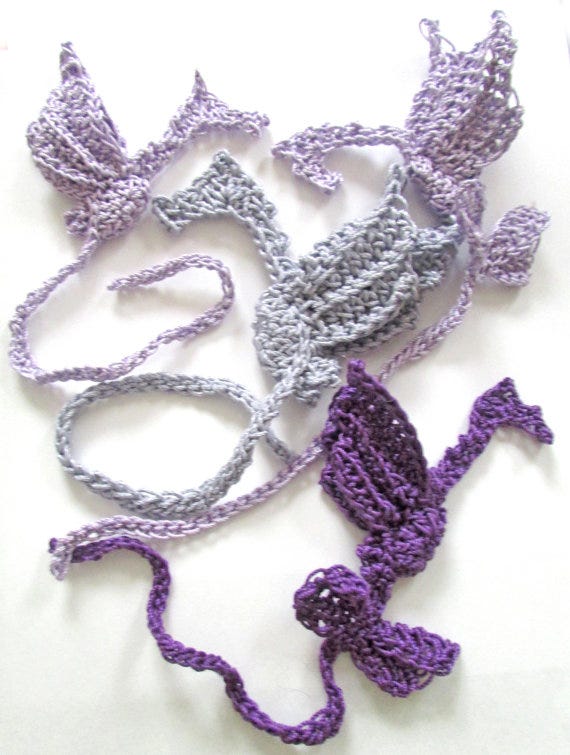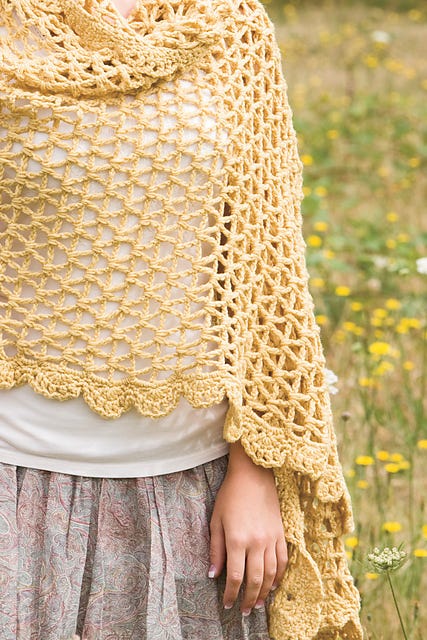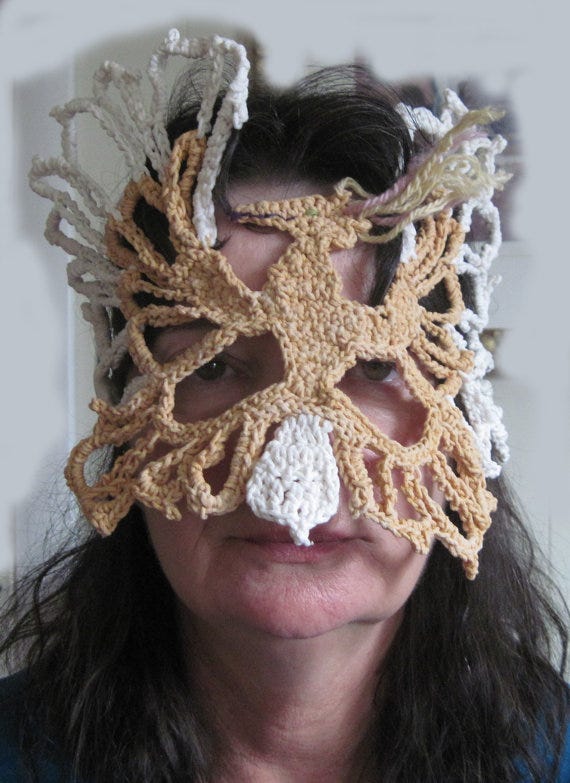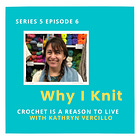Crochet Heals: Interview with Akua Lezli Hope
"It is the doing that is glorious. To be able to do, to create, is an affirmation."
From the archives. This interview was published in Happily Hooked magazine in April 2015. I had a monthly column there for eight years called “Crochet Heals” where I learned so much from others about the many ways that craft improves life.
Akua Lezli Hope suddenly woke one morning ten years ago to discover that she was paralyzed from what was eventually diagnosed as transverse myelitis, a neurological condition of unknown origin that causes inflammation across the spinal cord. She turned to crochet, a craft she’d known since she was a child, and used it as a creative outlet while she adjusted to her new way of life. Akua continues to crochet, designing and selling her items online.
Hi, Akua. Thanks for chatting with me today. I want to dig right in and find out what you experience with your diagnosis of transverse myelitis.
On November 4, 2005, just a few minutes after 3 in the morning, I became paralyzed. It was sudden and cataclysmic. I was later diagnosed with idiopathic transverse myelitis. The condition leaves me unable to walk, unable to move my legs and in constant pain.
That sounds frightening and so difficult to cope with. I know that crochet helped you in your healing process. Can you tell us a bit about that?
I don’t know how it helps, I just know that it does. It is like meditation, which has benefits that are apparent and historic, even though they’ve only been recognized by science.
I can’t unbundle the experience to say what the most beneficial aspect is; the prize is the entire journey. This journey sometimes enables me to enter flow, sometimes timelessness. Other times it is being acutely present and specific, exploring a puzzle to be solved, an expertise to demonstrate or acquire, a conversation or an argument requiring resolution.
After that day in 2005, I had to spend months in the hospital and then in a nursing home. During that time, crochet was my greatest comfort. I had already been very involved in and committed to several other art forms, but I was unable to access those due to the paralysis. Crocheting enabled me to continue to create. My physical limitations had no impact on my crocheting. My involvement and production with crochet blossomed during that time. I explored different forms of crochet, I began to design and I even began selling my creations online.
It sounds like you already knew how to crochet before then. When did you learn?
I learned to crochet around the age of 12. My mother taught me, although the funny thing is that she didn’t crochet herself and many years later she asked me how I had learned to crochet! At that point I had been exploring multi-dimensional crochet and had made her a flower coat of different flower-centered square motifs. I remember telling her that she had taught me! She was an excellent knitter and a brilliant seamstress, skills that I held in esteem but didn’t acquire myself.
My crocheting in high school was scarves and various hats. In the late ‘70s and ‘80s, I crocheted on the subway and could hook while traveling, with one arm wrapped around the subway pole. I used to crochet a lot in public at that time. These days I usually crochet alone at home but I always take a project with me when I’m going to be waiting at a doctor’s office.
How interesting that your mom didn’t remember teaching you to crochet. Have you ever taught anyone else to crochet?
Following my paralysis, I lived away from my home in a wheelchair accessible apartment building for the disabled and elderly. I organized crochet classes, there. Residents and management donated yarn and tools for those residents without so that all those interested could participate. Back home, I posted my availability on Betterfly, through which students find me, so I’ve been able to continue to teach others.
Was that the first time that you had crocheted in a group setting?
No, not at all. Years ago I was part of a group of women who gathered to work on projects in community. We knew each other through glassmaking, but we all had a fiber connection, so these meetings were specifically to knit or crochet together.
Do you consider yourself part of a craft community?
Yes! I am part of a craft community online. My crocheting is so amply supported by Ravelry with its many different groups, enabling me to learn, explore and express my particular interests including freeform crochet, amigurumi, Irish Crochet, Russian crochet, Tunisian crochet, crochet jewelry, shoe making, crocheted rugs, and weaving.
You mentioned before that you usually crochet alone these days. Where do you do that?
I crochet anytime! I definitely make sure I have a hook in hand if I’m watching TV. I crochet in bed, I crochet in the wheelchair, I crochet in front of the computer. I have crochet hooks in containers by my computer and by my bed in fabric hook caddies.
Who inspires your crochet?
Most of my designs are inspired by a particular person: beloved friends, a niece, nephews, brother-in-law. I invest in the effort to answer the questions, “what would suit them? What would they wear?”
But I don’t crochet for them in particular. They are a construct to inspire the designs.
Do you ever crochet for yourself?
Yes! It took me awhile to give myself permission to crochet for myself, but when I finally did, I so love the things I’ve created for me.
Have you seen crochet heal / help anyone else in your life?
I remember the pride of a student who was having a hard time figuring out the increases necessary to make a flat circle for hats. The stitch markers kept getting lost and she had trouble keeping count. Then, after a week’s absence she returned to the group with the glow of triumph on her face and a bag full of hats. She had at last gotten it and had churned out about a dozen hats for her loved ones. One month later, she was dead. We didn’t know that she was dying of cancer — there was nothing in her aspect that suggested diminution — the crocheting group was focused on making and learning, an energetic and enthusiastic environment. I am grateful for the lesson she shared by her example, growing and learning even in these final stages of life.
It is the doing that is glorious. To be able to do, to create, is an affirmation. The joy of creating and participating in the great song of life by adding your notes. Being is realized in doing. I crochet to create. I am a Creator.
You mentioned the other arts that you used to do. Are you able to do any of those now?
I am a hand papermaker and begin from scratch, with plants, harvesting from my yard and from friends. I create using wire. I make jewelry using fiber wire and glass. Prior to paralysis, I could sand cast and kiln cast glass; I have begun to explore torch-fired precious metal clay (PMC) to soothe my missing flame work with glass. And, I’ve begun to weave again using straws, sticks, peg loom, circular looms and objects, and board looms.
What a wonderful wealth of creative expression! Besides crochet and these others arts, what things do you do to heal?
I dream; meditate; sing and make up songs; play my saxophone; write poetry and short fiction and I eat mostly fruit and vegetables.
Visit Akua at her Etsy Shop, AkuaDesigns. You can also see 100+ designs that she’s created and posted on Ravelry.
If you read this far, perhaps you liked the work. The work does take work. It only continues with support, so please consider subscribing. My annual rate starts at $10 per year.











Thank you , a fascinating interview with an extremely interesting person. So many ideas.